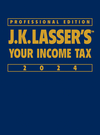Relief for Victims of Financial Ponzi Schemes
The Bernard Madoff Ponzi scheme and other similar financial frauds in 2008 left thousands of investors without their money and with uncertainty about how to handle their losses for tax purposes. Now the IRS has provided guidance by creating a safe harbor that victims can rely upon to obtain tax relief. This safe harbor allows eligible investors to treat losses as a theft loss and claim a deduction now; using the safe harbor avoids problems of proof of how much income reported in prior years was fictitious or a return of capital.
Who Qualifies
The safe harbor can be used only by an investor in a taxable account where the lead figure, such as Bernard Madoff, was charged federally or under state law with fraud, embezzlement, or a similar crime and the investor invested solely with such lead figure (and not through a fund or other entity).
The safe harbor does not apply to investments made through tax-deferred accounts, such as IRAs.
What to Deduct
Under the safe harbor, an investor can deduct 95% of the “qualified investment” if he or she isn’t pursuing any third-party recovery, or 75% if pursuing or intending to pursue a third-party recovery. The “qualified investment” is the sum of cash and the basis of property invested in the arrangement over the years, plus income (even so-called phantom income) derived from the arrangement that was included for federal tax purposes in the investor’s income, minus any cash or property withdrawn by the investor from the arrangement. After applying the 95%/75% percentage, the deductible amount is then reduced by any actual or potential insurance or Securities Investor Protection Corporation (SIPC) recovery.
When to Claim the Deduction
Eligible investors can claim this safe harbor deduction in the year of discovery, which is usually the year in which the lead figure has been indicted.
Attach to the return for the year of discovery a form found in Appendix A of Revenue Procedure 2009-20 (www.irs.gov/pub/irs-drop/rp-09-20.pdf). The form has lines to complete for the computation of the deduction as well as required statements and declarations to rely on the safe harbor.
Also, since the loss is treated as a theft loss, Form 4684 must be used to report the theft loss. Enter the “deductible theft loss” on line 34 of Form 4684 (mark “Revenue Procedure 2009-20” across the top of the form).
Attach the Appendix A form and Form 4684 to the return for the year of discovery. If a return has been filed for that year before April 17, 2009, this safe harbor can be claimed by amending the return by May 15, 2009.
Since the loss is treated as a theft loss (not subject to the $100 and 10%-of-adjusted-gross-income limits usually applied to casualty and theft losses), amounts that can’t be used in the current year can be carried back as a net operating loss (NOL) to offset income in prior years. The IRS concludes that under the economic stimulus law enacted in February, individuals with income up to $15 million can use a special 5-year NOL carryback for losses discovered in 2008.
Source: Rev. Rul. 2009-9; Rev. Proc. 2009-20.
Capital asset
Property subject to capital gain or loss treatment. Almost all assets you own are considered capital assets except for certain business assets or works you created.



